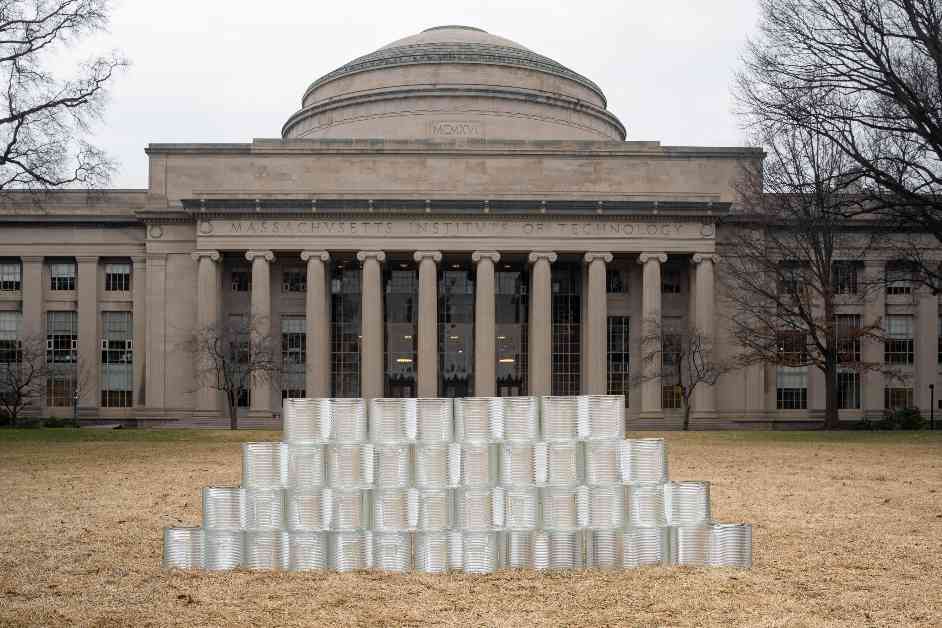3D Printed Glass Bricks: Revolutionizing the Construction Industry
In a world where sustainability is a growing concern, the construction industry is constantly seeking innovative solutions to reduce its environmental impact. Circular construction, a concept that aims to reuse and repurpose building materials to minimize waste, is gaining momentum. At the forefront of this movement are engineers at MIT who are developing a new type of reconfigurable masonry made from 3D-printed, recycled glass.
The idea behind circular construction is simple yet profound. Imagine if construction materials could be easily disassembled at the end of a building’s lifespan and reassembled into a new structure, creating a sustainable cycle that could supply generations of buildings using the same physical building blocks. This approach not only minimizes the manufacturing of new materials but also reduces the construction industry’s “embodied carbon,” which refers to the greenhouse gas emissions associated with every process throughout a building’s construction, from manufacturing to demolition.
Glass, a highly recyclable material, is the focus of MIT’s latest research endeavor. By utilizing a custom 3D glass printing technology provided by MIT spinoff Evenline, the team has successfully created strong, multilayered glass bricks designed to interlock, much like LEGO bricks. In mechanical testing, these glass bricks have demonstrated resilience, withstanding pressures similar to that of a concrete block. This breakthrough paves the way for a new era of sustainable building materials.
The Power of Recyclable Glass Masonry
Kaitlyn Becker, assistant professor of mechanical engineering at MIT, emphasizes the significance of transforming glass into masonry that can be disassembled and reused in a circular manner. She envisions a future where glass bricks can be repurposed multiple times, serving as recyclable building blocks for facades and internal walls. The possibilities of 3D-printed glass masonry are limitless, offering a sustainable solution to traditional construction methods.
Michael Stern, a former MIT graduate student and founder of Evenline, acknowledges the transformative nature of using glass as a structural material. By pushing the boundaries of architecture, the team is opening up new avenues for sustainable design and construction. The reconfigurable nature of glass masonry challenges conventional notions of building materials, inspiring a shift towards more eco-friendly practices.
From Concept to Reality: The Development Process
The journey towards creating 3D-printed glass bricks began in MIT’s Glass Lab, where Becker and Stern first explored the potential of glass as a construction material. Stern’s innovative 3D printer, capable of printing molten recycled glass, laid the foundation for their research. Becker’s expertise in manufacturing and design complemented Stern’s technical skills, leading to the development of a novel glass masonry unit.
The team utilized the Glass 3D Printer 3 (G3DP3), the latest version of Evenline’s glass printer, to melt crushed glass bottles into a printable form. By incorporating round pegs on each glass brick, similar to LEGO studs, the bricks could interlock seamlessly to form larger structures. The figure-eight shape of the bricks allowed for curvature in walls, providing a unique architectural element to the design.
Mechanical testing revealed the impressive strength of the glass bricks, with some surpassing the durability of concrete blocks. The interlocking feature, made from a different material, showed promise in enhancing the structural integrity of the bricks. As the team continues to refine their design, they aim to explore the scalability of glass masonry and its potential applications in real-world construction projects.
Building a Sustainable Future with Glass Masonry
The implications of MIT’s research extend far beyond the realm of construction. By harnessing the recyclable properties of glass, the team is paving the way for a more sustainable future. The ability to disassemble and reuse glass bricks in multiple structures offers a new paradigm for circular construction, emphasizing the importance of resource efficiency and environmental conservation.
As Becker and Stern look towards the future, their vision includes progressively larger, self-supporting glass structures that showcase the versatility and durability of 3D-printed glass masonry. From pavilions to buildings, the possibilities are endless. By reimagining traditional building materials and processes, MIT’s innovative approach to circular construction is setting a new standard for sustainable architecture.
In conclusion, the development of 3D-printed glass bricks represents a significant advancement in the construction industry. By combining cutting-edge technology with sustainable practices, MIT engineers are revolutionizing the way we build structures. The potential for recyclable glass masonry to transform the way we approach construction is immense, offering a glimpse into a future where sustainability is at the forefront of every design decision.













